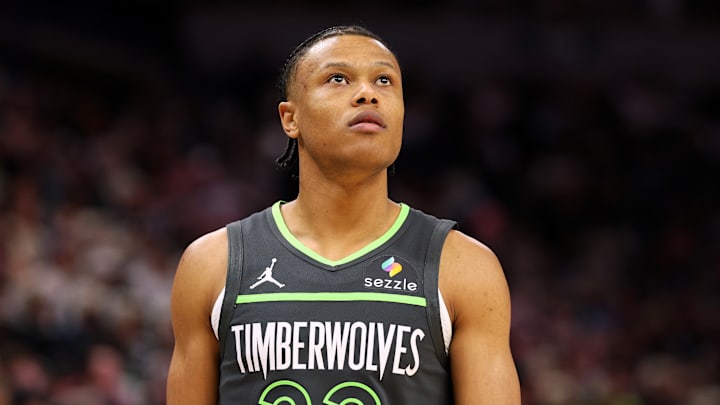Jaylen Clark is one player who could see a bigger role on the Minnesota Timberwolves this season. Following the departure of Nickeil Alexander-Walker, there are some open-wing minutes and a clear need for on-ball defense. During media day, Clark seemed to understand exactly what he needs to do to earn a bigger role this season.
Jaylen Clark on how he can find increased minutes
— Jonah (@Huncho_Jman) September 29, 2025
"I think if I shoot 40% from three and guard the best player every night I will be out there quite a lot." pic.twitter.com/IObXuZHFBf
Last season, Clark averaged 13.1 minutes and 4.1 points, on 46.7/43.1/78.4 shooting splits in 40 games. Clark, who missed his rookie season with an Achilles injury, started the year on a two-way contract. However, he was later converted to a standard deal and earned some real minutes with the Wolves at the end of the season.
Clark will be competing with Terrence Shannon Jr. for wing minutes. Regardless, it's possible that both players earn a real role in the Wolves' rotation.
Clark's defense will get him on the court, but his shooting will define his role
Clark's defense will get him on the court to some degree. Notably, he held opponents to 45.8 percent shooting from the field, including holding Shai Gilgeous-Alexander to 29.4 percent from the field. Luka Dončić and Devin Booker also ranked in the top seven of Clark's most common matchups; he held both of them to 40 percent or below shooting. Overall, Clark often took on difficult matchups and ranked in the 73rd percentile for matchup difficulty per CraftedNBA.
It's fair to expect this number to go up following Alexander-Walker's departure. Other than Jaden McDaniels, Clark is the Wolves' best on-ball defender, and his willingness to guard elite stars will help him carve out a role. Clark is also an impressive defensive playmaker; his 3.3 steals per 100 possessions last season ranked in the 96th percentile per DataBallr.
While Clark's defense will help him get on the court to some level, shooting will be the true swing factor for him. Clark netted a stellar 43.1 percent of his 3-point shots last season. Nevertheless, this was on a low volume of just 1.3 shots per game, and for his college career at UCLA, Clark shot just 30.2 percent from beyond the arc.
Clark's role on offense is a pure spot-up shooter. If he's able to hit his open shots at a rate close to last season, Chris Finch won't be able to keep him out of the rotation. However, if he shoots closer to his college average, Clark will only receive occasional spot minutes. Luckily, though, the 6-foot-5 wing understands what he needs to provide to earn consistent minutes.
